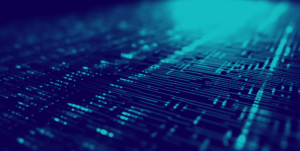Looking to acquire funding and c-suite support for lateral movement protection investment within your organization? Read on.
In the realm of cybersecurity, lateral movement protection is a crucial element for organizations to mitigate cyber threats. Lateral movement refers to the technique employed by attackers to spread across a network or container environment to gain access to high-level accounts and sensitive data. This technique is often used after an attacker has successfully penetrated a network, and they want to escalate their access privileges to achieve their malicious goals.
Organizations need to invest in lateral movement protection for several main reasons:
- Firstly, it helps to detect and prevent lateral movement before attackers can gain access to high-level accounts and sensitive data.
- Secondly, it helps to contain an attack to a specific area of the network, limiting the damage that can be caused by the attacker.
- Finally, it helps organizations to meet regulatory compliance requirements, which are increasingly becoming stringent in response to the growing threat landscape.
Return on investment of lateral movement protection
Investing in lateral movement protection is a cost-effective solution that can be deployed quickly and easily. It uses advanced machine learning algorithms and behavioral analytics to detect anomalous activity within a network, allowing organizations to detect and prevent lateral movement before it can cause any damage.
Lateral movement protection can help prevent data breaches, which can result in severe financial losses and damage to an organization’s reputation. The cost of a data breach can include expenses such as forensic investigations, legal fees, regulatory fines, and customer notification costs. According to the 2021 Cost of a Data Breach Report by IBM Security, the average cost of a data breach was $4.24 million in 2021.
Investing in lateral movement protection can be a cost-effective solution that can be deployed quickly and easily. It uses advanced machine learning algorithms and behavioral analytics to detect anomalous activity, allowing organizations to detect and prevent lateral movement before it can cause any damage.
Lateral movement protection can also help organizations meet regulatory compliance requirements. Regulations such as the General Data Protection Regulation (GDPR) and the California Consumer Privacy Act (CCPA) require organizations to implement measures to protect personal data. Failure to comply with these regulations can result in hefty fines.
Finally, investing in lateral movement protection can help organizations to build and maintain customer trust. A data breach can erode customer confidence in an organization’s ability to protect their sensitive information. By investing in lateral movement protection, organizations can demonstrate their commitment to protecting their customers’ data.
Overall, the ROI of lateral movement protection is significant, as it helps to prevent data breaches, meet regulatory compliance requirements, and maintain customer trust. It is crucial for organizations to invest in lateral movement protection to protect their sensitive data from cyber-attacks.
Real-world lateral movement attacks
Lateral movement attacks have been on the rise in recent years, with attackers using sophisticated techniques to evade detection and gain access to high-level accounts.
One example is the 2017 Equifax data breach, where attackers used lateral movement to gain access to sensitive data. The attackers exploited a vulnerability in the company’s website to gain access to its network. Once inside, they moved laterally across the network, using compromised credentials to gain access to sensitive data. The breach resulted in the theft of 143 million records containing sensitive personal information, including Social Security numbers and birth dates.
Another is the 2019 Capital One data breach, where an attacker gained access to the company’s Amazon Web Services (AWS) environment using a misconfigured firewall. Once inside, the attacker used a technique known as a Server-Side Request Forgery (SSRF) attack to gain access to a server containing sensitive data. The attacker then used lateral movement to gain access to other servers and steal data. The breach resulted in the theft of 100 million records containing personal information, including Social Security numbers and bank account details.
The list of significant attacks is a long one and probably worthy of an additional post, and one can’t help but come across more every day as they are reported by the IT security and cyber protection press.
A growing trend
Lateral movement attacks have been on the rise in recent years, and there are several examples and statistics that demonstrate this trend:
- The 2021 Verizon Data Breach Investigations Report found that lateral movement was present in 61% of the analyzed breaches. This indicates that attackers are increasingly using lateral movement as a technique to gain access to sensitive data.
- A recent CrowdStrike Global Threat Report found that the average breakout time – the time it takes for an attacker to move from the initial point of entry to another system or network – was 4 hours and 40 minutes in 2020, a significant decrease from 9 hours and 42 minutes in 2019. This shows that attackers are becoming more efficient in their lateral movement techniques.
- In Splunk’s 2023 State of Security Report, it was highlighted that bad actors get in, and when they do, their average dwell time is 2.24 months.
- The 2021 it was found that lateral movement was the most common technique used by advanced threat actors. A report found that lateral movement attacks accounted for 61% of all attacks in 2020, up from 45% in 2019.
- In 2020, the US Cybersecurity and Infrastructure Security Agency (CISA) issued an alert warning of an increase in lateral movement attacks targeting government agencies and critical infrastructure. The alert highlighted the importance of implementing measures such as network segmentation and access control to prevent lateral movement.
- The infamous 2020 SolarWinds supply chain attack is another example of a lateral movement attack that resulted in significant damage. The attackers used a backdoor to gain access to SolarWinds’ Orion software, which was then distributed to thousands of SolarWinds customers. The attackers used lateral movement techniques to move across networks and gain access to sensitive data.
Overall, these examples and statistics highlight the growing threat of lateral movement attacks and the need for organizations to mitigate this risk with lateral movement investment.
Securing against the inevitable
It is essential to note that no organization is immune to cyber-attacks. Attackers are becoming increasingly sophisticated, and they will eventually breach a network or container environment. Therefore, it is crucial for organizations to invest in lateral movement protection to minimize the damage that can be caused by an attack. Lateral movement protection works by detecting and preventing attackers from moving laterally. It uses advanced machine learning algorithms and behavioral analytics to detect anomalous activity within a network, allowing organizations to take action before any damage is caused.
As we often say, “We’re not the police. We’re the jailers.”
If they get in, they’re going nowhere.
Setting the standard for compliance
Lateral movement protection can help organizations meet regulatory compliance requirements in several ways. Regulations such as the General Data Protection Regulation (GDPR), the Health Insurance Portability and Accountability Act (HIPAA), and the Payment Card Industry Data Security Standard (PCI DSS) require organizations to implement measures to protect a user’s personal data. Lateral movement protection can help organizations to achieve compliance with these regulations by detecting and preventing unauthorized access to sensitive records and information.
Here are just a few of the regulatory compliance data standards where lateral movement protection could help meet regulatory compliance standards:
- General Data Protection Regulation (GDPR): The GDPR is a regulation in the European Union that requires organizations to implement measures to protect personal data. Article 32 of the GDPR requires organizations to implement appropriate technical and organizational measures to ensure a level of security appropriate to the risk. Lateral movement protection can help organizations to achieve compliance with this requirement by detecting and preventing unauthorized access to personal data. The main regulatory body for GDPR is the European Data Protection Board (EDPB).
- Health Insurance Portability and Accountability Act (HIPAA): HIPAA is a US federal law that requires organizations to implement measures to protect protected health information (PHI). The HIPAA Security Rule requires organizations to implement technical safeguards, including access controls and audit controls, to protect PHI. Lateral movement protection can help organizations to achieve compliance with this requirement by detecting and preventing unauthorized access to PHI. The main regulatory body for HIPAA is the US Department of Health and Human Services (HHS).
- Payment Card Industry Data Security Standard (PCI DSS): The PCI DSS is a set of standards that applies to organizations that process credit card payments. The PCI DSS requires organizations to implement measures to protect cardholder data. Requirement 10 of the PCI DSS requires organizations to implement network segmentation to restrict access to cardholder data. Lateral movement protection can help organizations to achieve compliance with this requirement by detecting and preventing unauthorized lateral movement across the network. The main regulatory body for PCI DSS is the PCI Security Standards Council.
Overall, lateral movement protection helps organizations meet regulatory requirements by detecting and preventing unauthorized access to sensitive data. By implementing lateral movement protection, organizations can demonstrate their commitment to protecting personal data, and avoid costly fines and reputational damage resulting from regulatory non-compliance.
Crucial investment
Lateral movement protection is a critical component of any cybersecurity strategy. Organizations need it to detect and prevent lateral movement, contain an attack to a specific area of the network, and meet regulatory compliance requirements.
Real-world examples have repeatedly shown how lateral movement attacks can result in severe financial losses, downtime, inconvenience, and damage to an organization’s reputation – and these attacks are on the rise. As a result, investing in lateral movement protection is crucial for organizations that want to protect their sensitive data from cyber-attacks.





